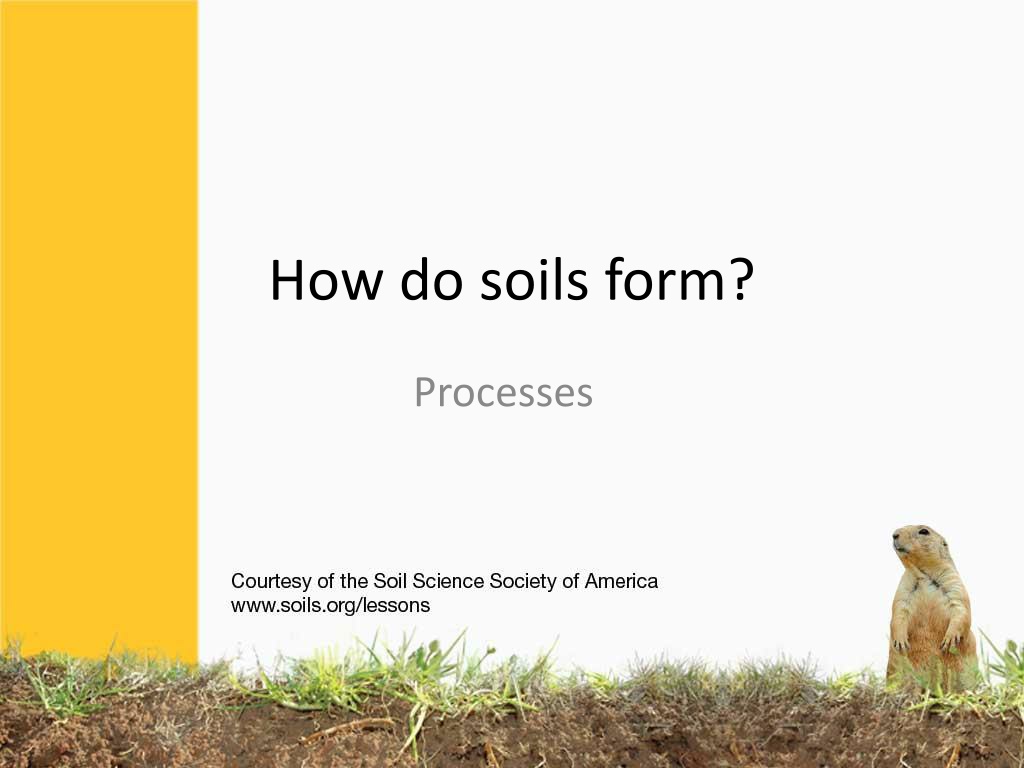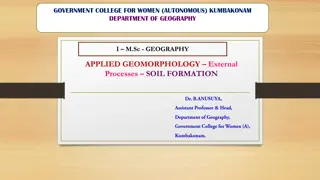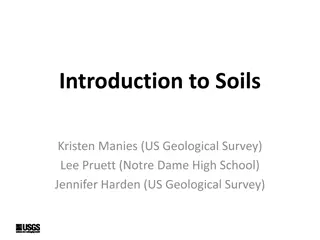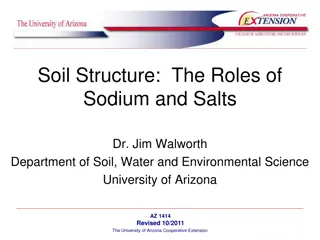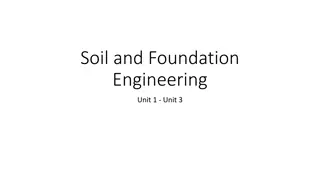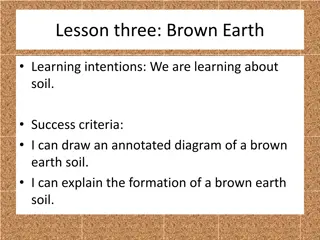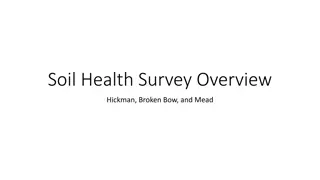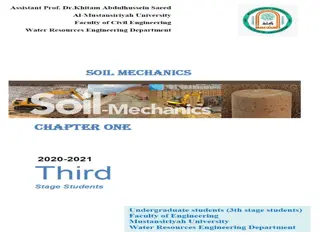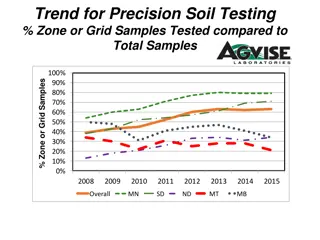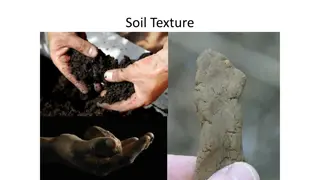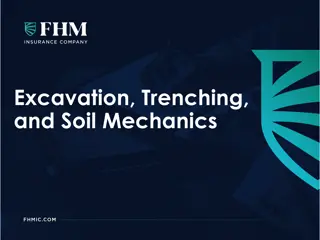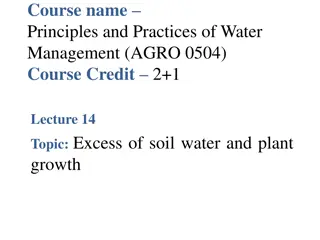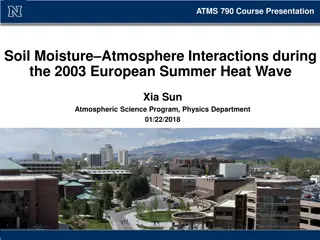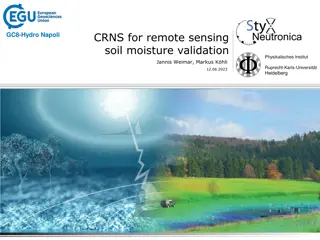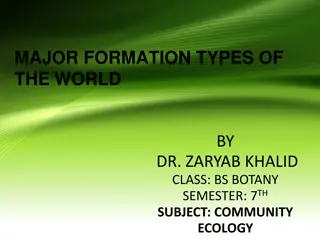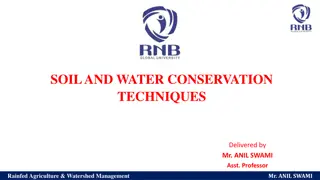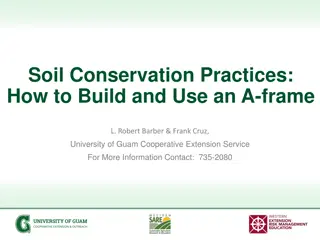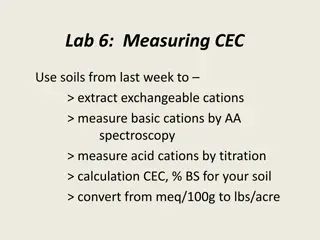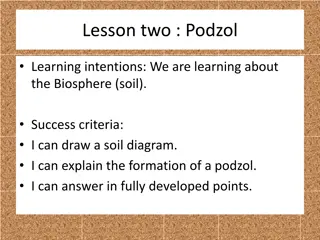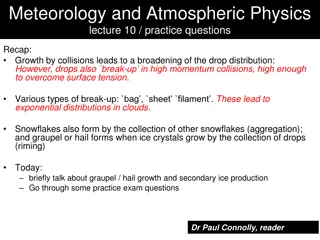Understanding Soil Formation Processes and Changes Over Time
Soil formation involves several processes such as additions, losses, translocations, and transformations. Additions like rainwater and organic matter, losses from evaporation and leaching, translocations by gravity and organisms, and transformations of components all contribute to the development and change of soil over time. The appearance and composition of soil vary with age, as minerals, organic matter, and organisms continually evolve. Key vocabulary includes weathering, decomposition, leaching, minerals, and humus.
Download Presentation

Please find below an Image/Link to download the presentation.
The content on the website is provided AS IS for your information and personal use only. It may not be sold, licensed, or shared on other websites without obtaining consent from the author. Download presentation by click this link. If you encounter any issues during the download, it is possible that the publisher has removed the file from their server.
E N D
Presentation Transcript
How do soils form? Processes
4 basic processes in the soil ADDITIONS LOSSES TRANSLOCATIONS (MOVEMENT WITHIN THE SOIL) TRANSFORMATIONS (ONE COMPONENT CHANGES TO ANOTHER)
ADDITIONS Rain adds WATER. Dust adds MINERALS. Animal waste add ORGANIC MATTER and NUTRIENTS. Humans add FERTILIZER.
LOSSES WATER evaporates into the air. Soil particles WASH AWAY in storms. ORGANIC MATTER may compose into carbon dioxide. NUTRIENTS and MINERALS leach into groundwater or are taken up by plants.
TRANSLOCATIONS MOVEMENT WITHIN THE SOIL GRAVITY pull WATER down from top to bottom. EVAPORATINGWATER draws minerals up from bottom to top ORGANISMS carry materials every direction.
TRANSFORMATIONS (ONE COMPONENT CHANGES TO ANOTHER) Dead leaves decompose into HUMUS. Hard rock WEATHERS into soft clay Oxygen REACTSwith iron, rusting the soil into a reddish color.
Looks Change With Age The older a soil gets, the more different it looks from its parent material. Soil is always changing minerals, water, air, organic matter and organisms always change.
AGE IN YEARS 0 10 100 1,000 10,000 100,000 A - topsoil E-Eluviated B- Subsoil C-Parent Material R- Bedrock A soil profile is like a snap-shot, capturing what the soil looks like NOW. In the PAST, soil looked different, and in the FUTURE, it will look different then it does now.
Vocabulary Transform Weathering Decompose Leaching Minerals Organic Matter Organisms Developed Soil Humus Bedrock
Vocabulary Additions Losses Translocation
